All about smoking and tobacco
Showing 17 hits
- The significance of social status, impulsiveness, discounting and psychosocial factors for tobacco consumption
The significance of social status, impulsiveness, discounting and psychosocial factors for tobacco consumption
Last update
The project will explore the significance of impulsiveness, discounting and psychosocial circumstances for tobacco use and changes in the tobacco-consumption behaviour of adults.Project - Approaching tobacco-related behaviour through the lens of distinction theory
Approaching tobacco-related behaviour through the lens of distinction theory
Last update
The project seeks to establish social, cultural, economic and demographic markers of various groups of tobacco users.Project - Tobacco use among adults (Indicator 10)
Tobacco use among adults (Indicator 10)
Last update
The indicator describes the following: Proportion of adults who use tobacco.Indikatorer for ikke-smittsomme sykdommer NCD
- Tobacco use among adolescents (Indicator 9)
Tobacco use among adolescents (Indicator 9)
Last update
The indicator describes the following: The proportion of adolescents using tobacco.Indikatorer for ikke-smittsomme sykdommer NCD
- Good effect of smoking cessation programmes among cancer patients
Good effect of smoking cessation programmes among cancer patients
Last update
A combined offer of individual follow-up and free nicotine replacement products can be of great help to cancer patients who wish to stop smoking. This is shown by a study from NIPH.Research findings
- Does use of snus in adolescence influence the risk of smoking in young adulthood? A longitudinal study of tobacco use in young people.
Does use of snus in adolescence influence the risk of smoking in young adulthood? A longitudinal study of tobacco use in young people.
Last update
This project will investigate changes and directions in tobacco use and factors associated with reduction or escalation of smoking and snus use between adolescence and adulthood.Project - Health consequences of electronic cigarettes - Protocol for an umbrella review
Health consequences of electronic cigarettes - Protocol for an umbrella review
Last update
Commissioned by the Ministry of Health and Care Services in Norway we will systematically evaluate health consequences of use of and exposure to e-cigarette aerosols (secondhand exposure).Project - Health risks associated with the use of electronic cigarettes: an interactive research map
Health risks associated with the use of electronic cigarettes: an interactive research map
Last update
The NIPH has systematically surveyed and created an interactive research map of existing literature on health risks associated with use of e-cigarettes.Report
- Use of e-cigarette in Norway. Exploring the culture and use of e-cigarettes in an Norwegian context
Use of e-cigarette in Norway. Exploring the culture and use of e-cigarettes in an Norwegian context
Last update
The main objective for this PhD-project is to explore the evolving vaper culture and use of e-cigarettes in Norway.Project - Health risks from snus use
Health risks from snus use
Last update
We were commissioned to update the 2014 report on health risks from snus use. The report presents updated figures on snus use in Norway, and assesses exposure and risk.Report
- How effective are primary prevention interventions to prevent tobacco use for children and youth? An overview of systematic reviews
How effective are primary prevention interventions to prevent tobacco use for children and youth? An overview of systematic reviews
Last update
We conducted an overview of reviews to examine the effects of primary tobacco prevention interventions – delivered in small social environments – for children and youth.Systematic review
- Smoking during pregnancy from 1999 to 2014. Analyses on data quality and socio-demographic trends.
Smoking during pregnancy from 1999 to 2014. Analyses on data quality and socio-demographic trends.
Last update
The study aims to evaluate the data quality of smoking habits over time and to describe national and regional trends in smoking prevalence in all pregnant women in Norway since 1999.Project - Monitoring tobacco habits and consumption
Monitoring tobacco habits and consumption
Last update
Monitoring the smoking habits of the population on a yearly basis using detailed information obtained by the Directorate of Health's tobacco surveys which began in 1973.Project - Cognitive therapies for smoking cessation: a systematic review
Cognitive therapies for smoking cessation: a systematic review
Last update
We evaluated the effect of cognitive therapies on smoking cessation. We included 21 randomised controlled trials.Systematic review
- What strategies are most successful in anti-smoking campaigns?
What strategies are most successful in anti-smoking campaigns?
Last update
The Norwegian Knowledge Centre for the Health Services made a rapid review on what strategies are most successful in anti-smoking campaigns.Report - Health risks of Scandinavian snus consumption - English summary (pdf)
Health risks of Scandinavian snus consumption - English summary (pdf)
Last update
The health risks of Scandinavian snus consumption were evaluated in 2005. Since then, the use of snus in Norway has increased substantially, particularly among young people.Report
- E-cigarette use is not risk-free
E-cigarette use is not risk-free
Last update
E-cigarettes are not without health risks for people who vape or for bystanders. This is one of the conclusions from a new risk assessment report from the Norwegian Institute of Public Health.Report

